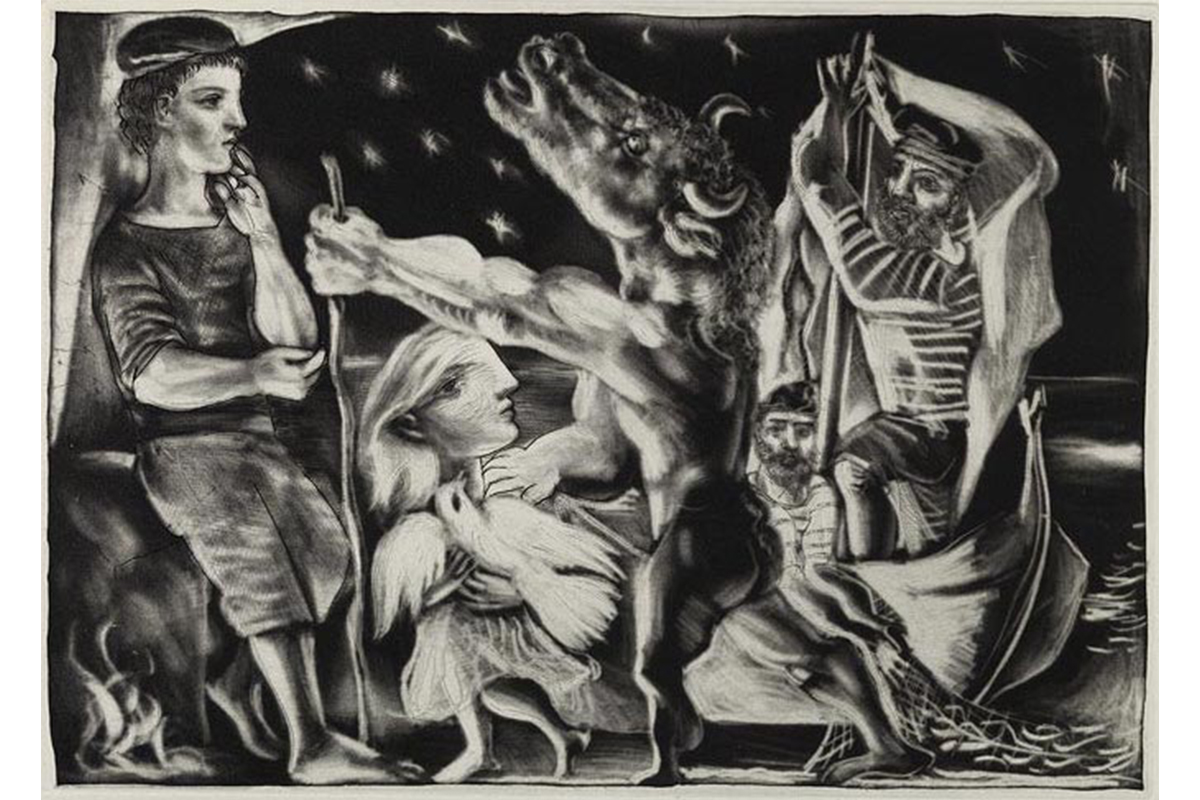
Picasso and the Minotaur
Amanda Shubert is is the Brown Post-Baccalaureate Curatorial Fellow in the Cunningham Center for the Study of Prints, Drawings, and Photographs.
This print is based on the Greek myth of the minotaur, which can be read in Ovid’s Metamorphoses. Like much of Metamorphoses, it is a tale of creativity and suffering. The story takes place on the island of Crete, where lives the minotaur, the monstrous child of a human and a bull. He is enclosed in a labyrinth constructed by the canny Daedalus, and each year he is appeased by a sacrifice of seven boys and seven girls from Athens. The Athenians are not terribly pleased with this arrangement, so they send Theseus to kill the minotaur. Ariadne, the woman who loves Theseus, gives him a gift before he leaves that saves his life: a golden thread that he can tie to a rock at the entrance of the labyrinth to guide him back out. Theseus kills the minotaur and returns to Athens victorious. But the story ends in tragedy: Theseus, in his jubilation, forgets to change the black sails of mourning to the white sails of victory, and when his father Egeus sees the boat from a high cliff approaching the city, he throws himself into the ocean out of grief.
Ovid’s tale is complex to begin with – all those layers of art and artistry, wildness and captivity, love and suffering. Picasso reflects the many facets of the story in his composition, but he also alters them in significant ways. There is the minotaur in the foreground, who here is blind, his unseeing eyes lifted powerfully towards the starry sky. There is a young girl holding a dove, occupying the brightest area of the composition, perhaps an Ariadne figure. We can see a man in a boat half-shrouded in his sail, reminding us of Theseus, Egeus, and the sad final notes of the tale.
In this work, Greek mythology collides with Picasso’s own personal mythology of artistic creation. The minotaur is a motif in Picasso’s oeuvre, symbolizing the tortured artist. Picasso’s minotaur is fierce and virile, yet also sympathetic and even fragile. He is blind, which suggests that he is a visionary who transcends literal sight, but he also relies on the innocent girl who guides him.
Minotaure Aveugle Guide par une Fillette dans la Nuit is from Picasso’s Vollard suite, a series of 100 prints all made after themes from Ovid’s Metamorphoses. The series is named for Ambroise Vollard, the foremost French print dealer and publisher at the time.